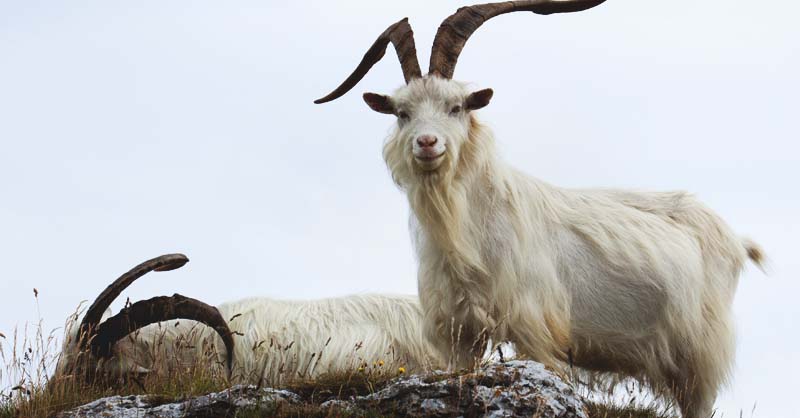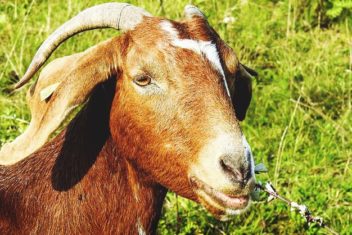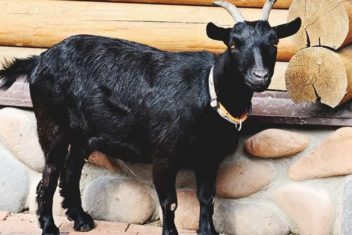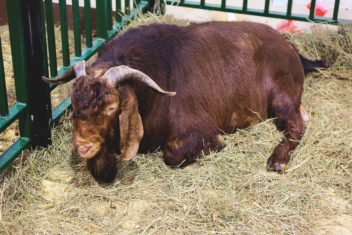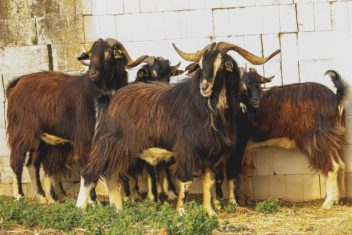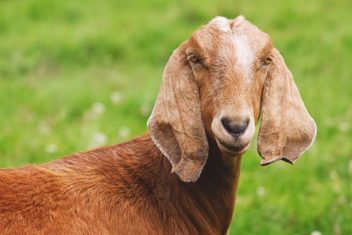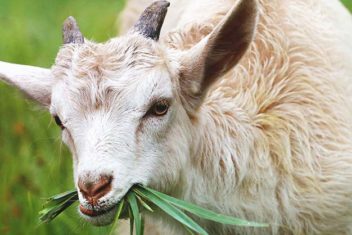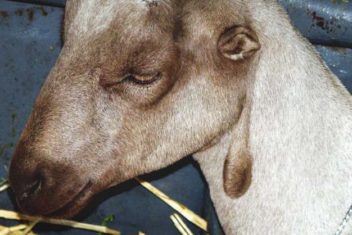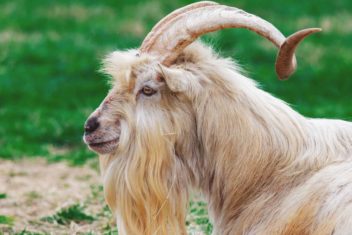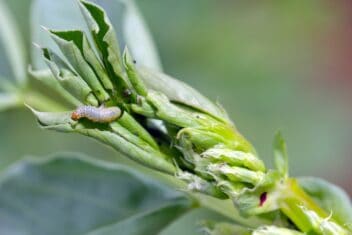Soft, warm, elegant, and costly. These are the words that spring to mind when I run my fingers across a cashmere shawl or sweater.
Did you know this expensive material comes from goats – the Cashmere goat specifically?
Cashmere goats are relatively new to the United States but their fiber has been prized for centuries. Both the Middle East and Asia were the longstanding exporters of cashmere. In recent years, Australia and New Zealand began selecting the best cashmere genetics and great success has come from this program.
In the United States Cashmere goats often have Spanish goats, and even dairy goats like Toggenburgs and Nubians, in their lineage. Regardless of region, the demand for cashmere continues to rise around the world.
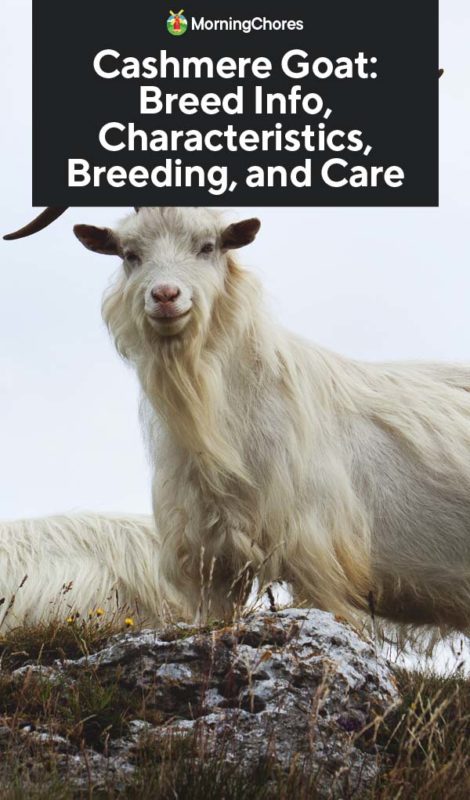
Breed Standards of the Cashmere Goat
One important point must be made about Cashmere goats: Cashmere goats are a type of goat, not a breed.
How can this be? Cashmere is the soft downy undercoat which all goats, except Angoras, have. What classifies a goat as a cashmere goat is a coat that has a high cashmere down yield.
In North America cashmere goats with meat goat ancestry are desirable since this makes them a dual-purpose animal. Marketing cashmere goats for both fiber and chevon makes them more profitable.
That being said, registries such as the North West Cashmere Association, Canadian Cashmere Producers Association, and Cashmere Goat Association have created certain qualities for cashmere goats.
1. Fiber
As a rule, cashmere goats are judged 50% on the coat (fiber) and 50% on body conformation. For a cashmere goat, the most important coat qualities are cover and consistency.
– Cover
Complete and consistent are keywords for evaluating their coat (called cover). Complete means that the neck, shoulders, sides, and hips (also called harvest sites) are completely covered in soft down.
Consistent means the fiber is the same crimp (style) and quality at all the harvest sites. So in addition to the cover being full, it must also be consistent to be considered quality fiber.
– Conformation
Body conformation is equally important as coat cover.
Excellent conformation includes beautiful head and horns (horns must follow a pattern that does not make them dangerous to people or animals though), a well-sprung barrel (ribcage), strong, well-muscled forequarters, back, and hind legs similar in appearance to a quality meat goat.
2. Chevon
Breeding cashmere goats to Spanish goats has increased cashmere quality because these genetics provide a market for goats with inferior coats. Goat meat is a demand that is also rising and these goats provide delicious meat to fulfill this market.
3. Height and Weight
Because Cashmere goats are not an actual breed there are no height or weight requirements. Some even chose to breed them with Pygmies; the diverse lineage of Cashmere goats means their size will be just as diverse.
4. Other Breed Specific Standards
– Wattles
Cashmere goats can have wattles. Wattles does not disqualify them from registration and only pose a problem if you shear them – you’ll want to know they are there so you don’t cut them!
Typical Characteristics
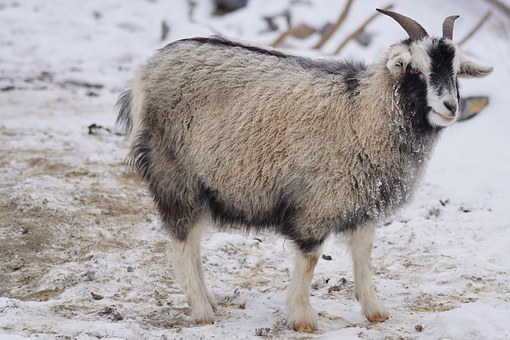
Again, Cashmere goats are not a breed so ‘typical’ doesn’t fully apply. They are the “wild card” among goats. Still, there are some general characteristics for Cashmere goats.
1. Fiber Production Details
When a Cashmere is combed or sheared there is the cashmere down and “waste” product. The waste product includes inferior hair, dirt, hay, and other debris in the coat.
The amount of cashmere you can roughly expect is 20% of the total coat (cashmere and waste combined). Another way to put the cashmere ratio is to expect to harvest anywhere from a few ounces on kids to 2 lbs. from bucks. Three other huge players in the amount of cashmere one goat will produce also include genetics, age of the goat, and the time of year.
2. Meat Production Details
Spanish goats are the meat goat most commonly crossed with Cashmere goats. The amount of meat you can expect corresponds to:
- The amount of Spanish goat in the bloodlines,
- If meaty breeds like Nubian and Pygmy are also in the line.
Choosing lines with strong meat production and asking the breeder what their herd’s meat-to-bone ratio specifically is, is the best method for knowing what your goat will produce.
3. Hardiness
Cashmere goats are very hardy animals. Their Spanish goat lines make them well suited to North America, not to mention they have one of the warmest coats in the animal kingdom.
4. Temperament
The Cashmere goat’s temperament depends very much on their lineage. Cashmere goats from Australia and New Zealand tend to have more wary and wild personalities.
On the other hand, Cashmere goats descended from more domesticated breeds (such as the dairy breeds) fall on the more gentle and friendly side of the scale. It’s always a good idea to visit the herd you are considering buying from and see how they respond to human interaction.
Possible Defects
In the past breeders tried crossing Cashmere and Angora goats. They hoped the Angoras would pass on their ability to make lots of hair, resulting in Cashmere stock producing a greater quantity of cashmere.
Regrettably, this “cashgora” experiment failed because the two types of fiber are incompatible. Why?
Angora goats produce mohair which has a denser quality than cashmere.
For hair to be considered cashmere it must be 19 microns or less in diameter. Angora mohair measures between 20-40 microns. While cashgora hair is about 19 microns it does not have the desired characteristics of either cashmere or mohair.
Because of this, cashgora is a serious defect in Cashmere goats; great care must be taken to make sure there is no cashgora genetics in your Cashmere stock.
Breeding Cashmere Goats
1. Maturity
A Cashmere doeling should be bred when she is 80 lbs. The exception would be if she has Pygmy in her lines; in which case, she should be bred at a year old.
Bucks reach reproductive maturity around 4 months of age, though it is generally suggested they be about 6-9 months old to make sure they are a reliable sire.
2. Mating Season
Most goats are seasonal breeders. This means they mate only for part of the year, normally from August-December. A Cashmere doe will cycle about every 18-21 days during this time until she is bred.
There are some meat breeds which cycle all year, meaning a Cashmere doe with these genetics may do the same. Asking the breeder of your Cashmere doe what is her norm (or her dam’s if she is still a doeling) will let you know what to expect.
3. Kids
The gestation period for Cashmere does is about 150 days or 5 months. Cashmere does are excellent mothers and can give birth to 1-3 kids. Kids will need to be protected from cold or damp weather and may even require a heat lamp if temperatures are especially cold.
Caring For Your Cashmere Goat

1. Feeding and Nutritional Needs
Cashmere goats are low-maintenance animals with very basic care requirements. They are natural browsers that do well on an intensive or rotational grazing system.
In addition to fresh forage, Cashmere goats need quality hay, fresh water, minerals, and does need grain during pregnancy to maintain body condition.
2. Housing and Fencing
Goats need a draft-free shelter to protect them from extreme weather and predators. A solid goat fence such as three-strand electric wire or cattle panels is also a good investment not only for protecting them from goat-hungry predators, but also protecting you from disgruntled neighbors.
3. Health Issues and Care
Parasites are the top health threat to your goats. Internal parasites will wreak their immune systems and external parasites (such as lice and ticks) will ruin their fiber.
The best methods of parasite prevention include disrupting the life cycle with rotational grazing methods and following a regular deworming schedule.
4. Grooming
According to the University of Nebraska down fiber begins growing about the longest day of the year and stops on the shortest. If left uncombed or unsheared it will shed as warmer weather arrives in the spring.
Combing and shearing are the two methods for harvesting down fiber. If you choose to shear the coat you will need a commercial dehairer to separate the guard hairs from the down fiber.
Cashmere goats are sheared or combed once a year usually between late December and early March. This time frame allows you to harvest the down after it has stopped growing but before the goat starts shedding their winter coat.
Along with combing and shearing, Cashmere goats also need their hooves trimmed every 4-6 weeks.
5. Training
It’s important to handle Cashmere goats often and train them to be calm while you are shearing or combing them. A few tips are to start when the kids are young and run your hands gently over their coats.
Training a goat to a lead rope is also a good idea. Again, start when she is young by leading her to food or short distances with a collar and lead rope.
Alternatives To Cashmere Goats
Angora goats are also a fiber goat known around the world for their beautiful mohair. If you want to grow your own fiber, yet want more production, Angora goats – the Cashmere goats’ long-haired cousins – might be the goat for you.
Did You Know?
Some historians think Napoleon might be the one who made cashmere the “fiber of kings” in Europe. Some reports say Napoleon bought his wife Josephine a ring shawl, so-called because the cashmere was so fine the shawl could be pulled through a wedding ring.
Conclusion
Cashmere goats are a valuable dual-purpose, homestead animal. With both cashmere and meat demand forecasted to rise, they are a promising venture for homesteaders everywhere.
